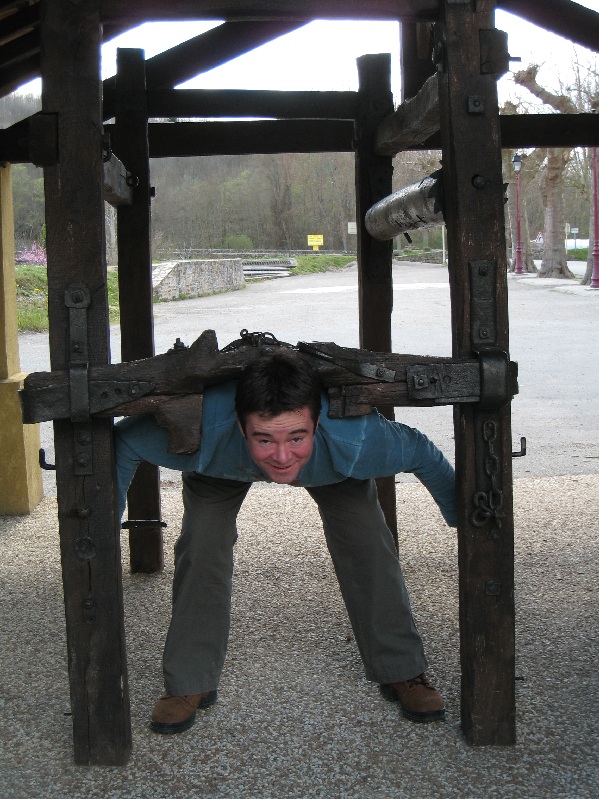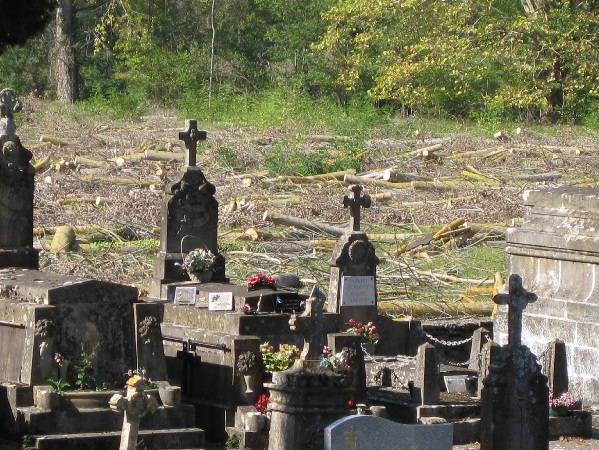Camon's changing landscape
We have only owned la maison aux symboles for 4 years but we have noticed several changes to Camon over this period. Most of these changes have hardly been meteoric but they seem to feed into an almost tangible feeling of vitality and progression in the village.
Camon is one of only two villages in Ariège which is classified amongst “le plus beaux villages de France” (the most beautiful villages in France). Following the opening of the voie verte footpath which passes over Camon's railway bridge in 2006, a plethora of informative signs and boards appeared (see my earlier blog “La maison aux symboles”) to inform tourists about Camon's heritage and significant buildings. The railway bridge itself was restored, cleaned and is now adorned with baskets filled with geraniums. Our village car park, which had hitherto been a fairly typical French free-for-all, now boasts a one way system accessed via a defined entrance AND it has marked out parking bays. Even the historical purpose of the funny-looking shed in the newly-defined “lorry park” area has been revealed thanks to the helpful sign announcing that it was, in fact, a cow-shoe shed.

Thanks to Greg for the, erm, demonstration of the cow-shoeing equipment. Shame he doesn't have 4 legs (photo by Mrs E)
It has also been noticeable over the last 4 years how the number of empty properties has reduced as enthusiastic people of varying nationalities (I know of British, Irish and French) are restoring and living in the old village houses. Certainly the old Camonais dynasties are still in their family homes but there are many more “incomers” than when we first bought our house. To my way of thinking these changes are both inevitable and desirable, simultaneously helping to maintain the special character of the village and injecting a renewed vigour.
However there has been one dramatic change that has shocked and thrilled me at the same time. I had heard reports of a French couple who had bought a long-empty property and the copse of statuesque golden poplar trees which filled the meander in the Hers river. This large area of trees was a dominant feature of the village and was visible from the footpath running along the far bank of the river, from the railway bridge and along the length of the rue des remparts. I recall standing in Kate and Roger's quirky round tower within the fortified walls of the village gazing out of their windows at the silver trunks and golden canopy, transfixed by the sheer beauty of the woodland.
“There are golden oriole nesting in there” Roger had told me.
I found this quite amazing as these shy birds favour nest sites in tall deciduous woodland and the distinctive yellow and black plumage of the male bird makes it notoriously difficult to spot against the dappled light of the canopy. I am thrilled that they are nesting in Camon and mightily impressed that Roger has spotted them. I therefore have very mixed feelings when I hear that the copse is to be felled by the new owners to make way for a vineyard.
While I do appreciate that the copse was planted as a crop to be harvested at some point, the inner tree-hugger in me is appalled at this destruction. The romanticist in me will miss the whispers of the bright golden leaves as they rustle in the breeze and I never managed a glimpse of the elusive golden oriole. But paradoxically I also have to welcome the resurrection of wine production in this corner of the Ariège over a century after phylloxera decimated the industry (see my previous blog “A rose by any other name”). In many ways it will mark the welcome return of one of the village's and département's traditional industries. I tell myself that this is, after all, crop rotation.

I lament the death of the beautiful copse and loss of the golden oriole's habitat but I also have to welcome the return of viticulture to Camon which disappeared over a century ago.
The copse has now been felled and most of the trees have been removed. It will take up to 2 years for the stumps to be removed, the “terroir” to be analysed and suitable grape varieties identified for planting. It will probably be 4 years in total before the first vendange and Camon once again becomes a wine-producing village.
Les arbres sont morts, vive le village